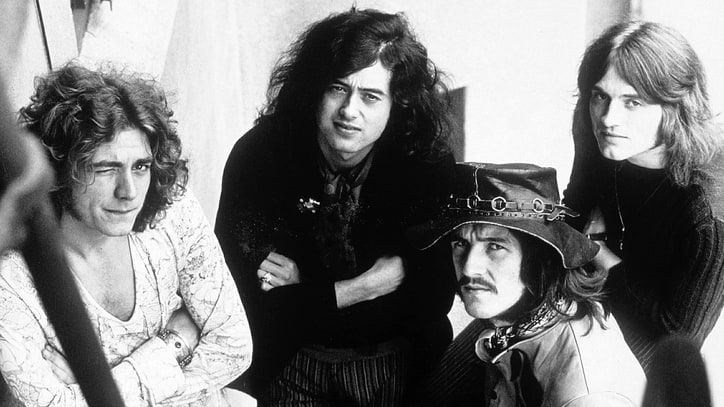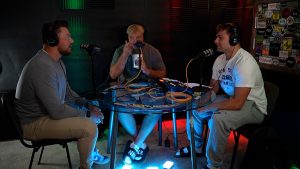The Led Zeppelin Saga
The Band That Changed Rock
June 5, 2018
“Does anybody here remember laughter?”
What started out as a group of preppy English school boys morphed into one of the most legendary rock bands with long flowing hair and fast, heavy rhythms and guitar-driven sound. They became the Beatles of the 70’s–international fame, women swooning over them, and hit record after hit record. Let’s look at how this came to be and the effect they have had on the music industry and culture.
Jimmy Page was just a session guitarist in the mid 60’s before he joined the Yardbirds (who broke up shortly after he joined). Page wanted to form a supergroup, instead, and recruited Yardbirds guitarist Jeff Beck and John Entwistle and Keith Moon of The Who. It never came to fruition, but Beck, Page, and Moon did record one song, “Beck’s Bolero” with future Zeppelin bassist John Paul Jones (not the founder of the U.S. Navy).
Determined to keep the Yardbirds alive, Page recruited Terry Reid to be a singer; though Reid declined, he suggested Robert Plant, who in turn suggested drummer John “Bonzo” Bonham. Jones requested to join and since Plant had known the others from session gigs, he accepted Jones. Thus the seeds of greatest had been sown.
Legend has it the name came about because Entwistle and Moon suggested that a band with Page and Beck would plummet like “lead in a balloon.” They dropped the “a” so it would not be pronounced like “leed” and changed balloon to zeppelin.
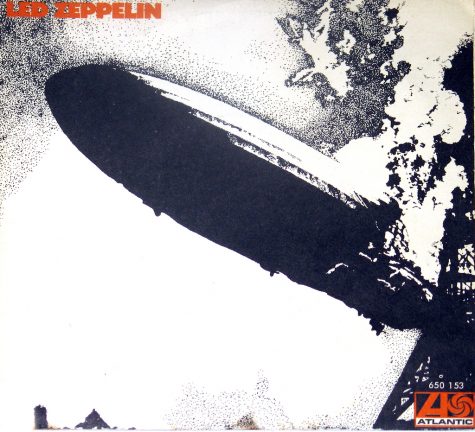 Led Zeppelin signed a recording contract with Atlantic Records in 1968 and recorded their first album in 1969, Led Zeppelin. It can be described as a unique blend of blues and hard rock. From the fast paced, hard drumming and incendiary guitar solos on “Good Times Bad Times” and “Dazed and Confused to the verses coupled with classical chords and picking on “Babe I’m Gonna Leave You” to the instrumental Indian-inspired “Black Mountain Side” and finally to the blues-based hard jam “How Many More Times,” Led Zeppelin was quite a dynamic album for its time and is ranked the 29th best album of all time by Rolling Stone.
Led Zeppelin signed a recording contract with Atlantic Records in 1968 and recorded their first album in 1969, Led Zeppelin. It can be described as a unique blend of blues and hard rock. From the fast paced, hard drumming and incendiary guitar solos on “Good Times Bad Times” and “Dazed and Confused to the verses coupled with classical chords and picking on “Babe I’m Gonna Leave You” to the instrumental Indian-inspired “Black Mountain Side” and finally to the blues-based hard jam “How Many More Times,” Led Zeppelin was quite a dynamic album for its time and is ranked the 29th best album of all time by Rolling Stone.
Later that same year, Led Zeppelin released Led Zeppelin II. This album begins with “Whole Lotta Love;” which has one of the most iconic guitar riffs of all time and a face-melting theremin solo. Zeppelin established themselves as the king of hard rock on this album with songs like “What Is And What Should Never Be,” “Heartbreaker,” and “Ramble On.” “Ramble On” features several literary references to J.R.R. Tolkien’s The Lord of the Rings and John Bonham playing drums on a guitar case with his bare bands. 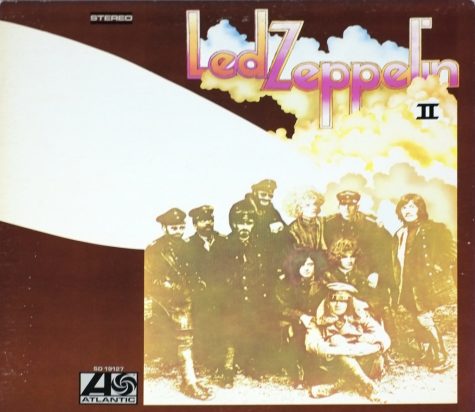
The song “Moby Dick” pays homage to Herman Melville’s literary epic. It showcases John Bonham’s heavy, intense, pulsating drumming and exemplifies his fast and sophisticated triplet rhythm from snare to toms and bass drum. This triplet rhythm has been dubbed by drummers “Bonham Triplets.” He played it with his bare hands and would go on for 20 minutes during shows while his hands bled. Both the song and trilogy are really long and good, but for different reasons.
As the decade turned, so did Zeppelin’s musical direction with Led Zeppelin III in 1970. The band went to their Welsh cottage, Bron-Yr-Aur, and worked at crafting their acoustic, Celtic, folk-based album. It opens with the famous “Immigrant Song,” where Plant wails and sings about Vikings, Norse mythology and sailing west to find new land. Rock critic Lester Bangs described the musicality as “bulldozer rhythms.” It makes me want to embark on a Scandinavian conquest and party in Valhalla. However, I adore this album for its beautiful, emotional acoustic songs like “Tangerine” and “That’s The Way” that move the soul. Led Zeppelin III was a turning point that demonstrated to the world their talent in all styles and was also a bridge from Led Zeppelin II to IV, the apex of Zeppelin’s fame and hard rock style.
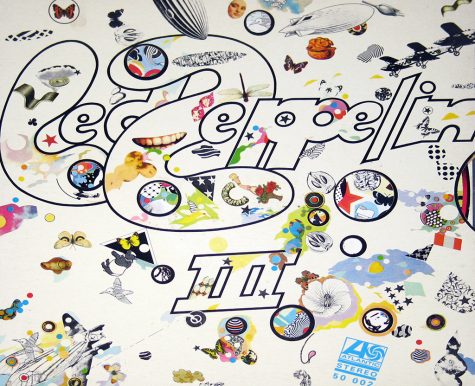 They were touring the world on a private Boeing 720 dubbed “the Starship,” rumours spread of trashing hotels, and their shows and dress became vibrant and complex. During this time, they released Led Zeppelin IV, which is one of the best selling albums of all time and cemented their status as the most popular band of the time. Zeppelin IV opens with “Black Dog” and “Rock And Roll,” both of which are iconic fast songs, with great riffs and killer guitar. “Rock And Roll” ends with an explosive drum solo by John Bonham where he uses his signature triplet rhythms. Next is folk duet called “Battle Of Evermore,” which is again an allusion to J.R.R. Tolkien’s book Lord of the Rings. The song has acoustic guitar and mandolin on it, giving it a unique folk vibe.
They were touring the world on a private Boeing 720 dubbed “the Starship,” rumours spread of trashing hotels, and their shows and dress became vibrant and complex. During this time, they released Led Zeppelin IV, which is one of the best selling albums of all time and cemented their status as the most popular band of the time. Zeppelin IV opens with “Black Dog” and “Rock And Roll,” both of which are iconic fast songs, with great riffs and killer guitar. “Rock And Roll” ends with an explosive drum solo by John Bonham where he uses his signature triplet rhythms. Next is folk duet called “Battle Of Evermore,” which is again an allusion to J.R.R. Tolkien’s book Lord of the Rings. The song has acoustic guitar and mandolin on it, giving it a unique folk vibe.
This next song on Zeppelin IV deserves its own paper and shrine for its impact on culture and the music industry — “Stairway To Heaven.” The song is divided into three parts and begins with the slow ominous sounds of recorders and a descending line on the acoustic guitar. The next section introduces Bonham’s drumming and electric instruments, and it finally reaches its climax with one of the greatest rock guitar solos of all time, Plant wailing on the vocals, and Bonham hitting the snot of the drumheads. The song concludes with Plant’s a cappella line “and she’s buying a stairway to… heaven.”
This song has been ranked by Rolling Stone as the 31st best song of all time and by VH1 as the third best rock song ever made. “Stairway To Heaven” was the most requested song on radio stations during the 1970’s and the song’s structure was groundbreaking for the band and for the time. Because of the experimental nature of using recorders for an intro, dividing a song into three sections, and its eight minute length, the argument could be well made that Led Zeppelin strongly dabbled in progressive rock. The song became a staple of Zeppelins live performances.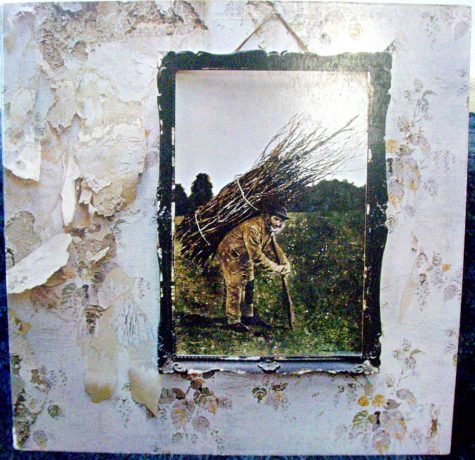
During said performances, the song would extend to over ten minutes and included Page playing longer guitar solos and Plant singing ab-lib lyrics like “does anybody remember laughter?” Page displayed and used for these live performances of Stairway a double-neck Gibson EDS-1275 so he would not stop playing when switching from a 6-string guitar to a 12-string guitar. This guitar became inseparable from Page’s stage presence of the 1970’s.
The rest of Zeppelin IV is also a masterpiece with the fast and hard “Misty Mountain Hop,” “Four Sticks” in ⅝ and 6/8 time with John Bonham playing with two sets of sticks, the mandolin and guitar-based ballad “Going To California,” and lastly the epic reworked, “When the Levee Breaks,” originally recorded by Joe McCoy and Memphis Minnie. This masterpiece was recorded in an old poorhouse which helped further the heavy style of John Bonham’s playing. His drum set was placed at the bottom of a stairwell and was recorded from two microphones placed at the top which give at a distant, deep, robust echo. Bonham’s sound coupled with Plant’s harmonica, mixed with the echo ahead of the sound, makes this an epic, expansive piece, and a great way to end Led Zeppelin’s greatest work.
Their next album was Houses Of The Holy from 1973. This experimental album opens up with the Zeppelin standard, “The Song Remains the Same,” which features the band’s quintessential fast, hard intro and guitar with slow verses. The Song Remains The Same is also a concert film the band made. Anyway, another song worth mentioning on this album is “The Rain Song,” which features beautiful dissonant chords, a wacky guitar tuning, the mellotron synthesizer and a beautiful build up of guitar and singing that climaxes to the end.
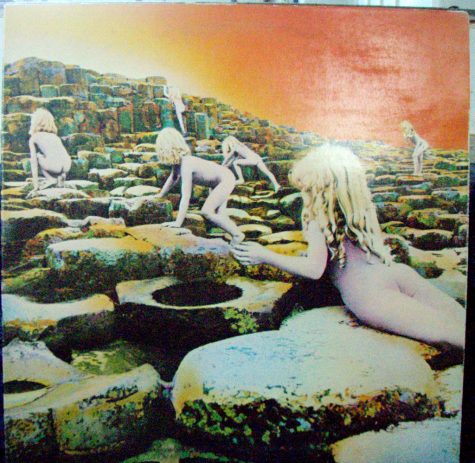 Another two great songs worth a mention are “No Quarter,” where Zeppelin does prog rock and the hard-rocking favorite “The Ocean.” “No Quarter” showcases John Paul Jones’s talent on the piano and synthesizer, as it is a synth-driven song with a piano solo in the middle. It is mellow but intense in the verses and each verse builds to the chorus. The song title is derived from the military practice of “No Quarter,” where no mercy is shown to a vanquished opponent. Once again, Plant sings about Vikings killing each other, making it a pretty cool Zeppelin piece.
Another two great songs worth a mention are “No Quarter,” where Zeppelin does prog rock and the hard-rocking favorite “The Ocean.” “No Quarter” showcases John Paul Jones’s talent on the piano and synthesizer, as it is a synth-driven song with a piano solo in the middle. It is mellow but intense in the verses and each verse builds to the chorus. The song title is derived from the military practice of “No Quarter,” where no mercy is shown to a vanquished opponent. Once again, Plant sings about Vikings killing each other, making it a pretty cool Zeppelin piece.
Houses of the Holy ends with “The Ocean,” another heavy rock song but in an unconventional 4/4 + ⅞ time signature with an unconventional guitar riff and drum beat. It’s a great hard rock song that once again demonstrates that Zeppelin can do anything–even playing rock in ⅞. Zeppelin.
Zeppelins next album was Physical Graffiti in 1975, which was a double album with 15 songs on it. Songs worth a mention on the first side are “Houses Of the Holy” and “Kashmir.” “Houses of the Holy” has distinctive bass and more unique riffs by Page. “Kashmir” is a wild progressive rock song influenced by Arabic and Middle Eastern modal tunings. The vocals and drums are in 4/4 + 2/4 while the ascending guitar riff is played in cycles of ⅜. This abstract songwriting took years and the lyrics were written by Plant in the Sahara Desert, which is probably why the song makes you feel like you are trudging through a steaming desert. Once a again a huge experimental hit that changed our notion of what rock and popular music could be.
The second side of Physical Graffiti opens with “In The Light,” which is driven by the synthesizers of Jones and his expertise. The song builds with the synthesizer and also uses the bowed guitar style of Page. “Bron-Yr-Aur” is the next song and my favorite Led Zeppelin song. Although it is only two minutes, it is the most gorgeous acoustic guitar playing and touches the soul. The last song worth mentioning is “Ten Years Gone,” a pensive musical exporation. Jimmy Page overdubbed the harmony section with 14 guitar tracks. They were a dedicated band.
In 1978, they recorded and released In Through The Out Door, which received much mixed reception. I am not a huge fan of it but songs worth a mention are “In The Evening” and “Fool In The Rain,” the first of which features droning guitar by Page, Plants shrill, and some great work by Jones. John Paul Jones is the underrated member of Led Zeppelin, but he was a brilliant composer and multi-talented musician. Regardless, “Fool In The Rain” has a groovy Latin feel in 12/8 time with polyrhythms.
Fast forward two years to September 1980, and Led Zeppelin meets its end. John Bonham got excessively inebriated and died from asphyxiation from vomit. The band was heartbroken by Bonham’s death, as he was an irreplaceable member of the band and a colossal juggernaut of a drummer. Zeppelin decided to disband following his death.
Now that you have made it through the Led Zeppelin saga, what does any of this mean? This band changed rock and music forever. This band still remains up there as one of the greats alongside the Beatles, The Rolling Stones, and The Who. Their style of blues roots and hard fast rock and rhythms was the precursor to modern rock and metal. They played for crowds of 57,000, outdoing the Beatles, innovated album-oriented rock and stadium rock, and influenced Nirvana, The Smashing Pumpkins, Soundgarden, Pearl Jam, the Ramones, The Cult, and so many greats.
The band is long gone, but their influence on the music industry will live on. They laid the foundation for all the next greats to flourish. Page’s guitar work is still cited by the greats of today, and he remains one of the greatest guitarists to walk the earth. John Bonham’s fast beats and his signature triplets are still admired by drummers worldwide. The Led Zeppelin saga changed rock forever.

